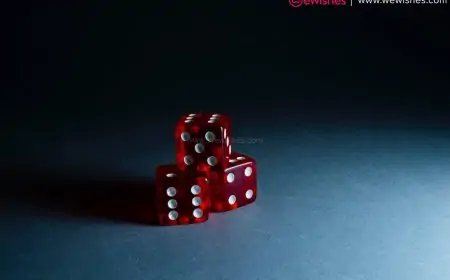In the world of casino gaming, slot machines are more than just games of chance; they are intricate systems designed to captivate players and keep them coming back for more. At the heart of a slot machine's allure lies its symbols – those colorful icons that dance across the reels, promising excitement, anticipation, and the potential for big wins. But what is it about these symbols that makes them so powerful? How do game designers use psychology to create engaging slot experiences? Let's delve into the fascinating world of the psychology of symbols in slot design.
Understanding Symbolism in Slot Machines
1. Symbolism and Meaning
-
Symbols in slot machines carry layers of meaning and significance. From fruits and numbers to diamonds and lucky sevens, each symbol is carefully chosen to evoke certain emotions and associations.
-
For example, a symbol like the lucky four-leaf clover taps into the universal concept of luck and good fortune, while a golden bell may symbolize wealth and prosperity.
2. Visual Appeal
-
The visual appeal of symbols is paramount in slot design. Bright colors, intricate designs, and eye-catching animations all contribute to the allure of the game.
-
Game developers invest significant resources in creating symbols that are visually striking and instantly recognizable, even from a distance.
3. Familiarity and Novelty
-
Slot symbols often strike a delicate balance between familiarity and novelty. While classic symbols like cherries and bars remain popular among players, designers also incorporate new and innovative symbols to keep the gameplay fresh and exciting.
-
By combining familiar elements with novel twists, game developers appeal to both traditionalists and players seeking new experiences.
The Psychology Behind Symbolic Engagement
1. Symbolic Priming
-
Symbolic priming is a psychological phenomenon wherein exposure to a symbol influences subsequent behavior and perceptions.
-
In the context of slot machines, repeated exposure to certain symbols can prime players to associate them with specific outcomes, such as winning or triggering bonus features.
2. Emotional Resonance
-
Symbols have the power to evoke strong emotional responses in players. Whether it's the thrill of seeing a jackpot symbol appear or the disappointment of narrowly missing a winning combination, emotions play a central role in shaping the player experience.
-
Game designers leverage this emotional resonance to create highs and lows within the gameplay, keeping players engaged and invested in the outcome of each spin.
3. Cognitive Biases
-
Cognitive biases, such as the gambler's fallacy and the illusion of control, influence how players perceive and interact with slot symbols.
-
For example, the gambler's fallacy leads players to believe that past outcomes influence future results, while the illusion of control fosters the belief that they can influence the outcome of a spin through timing or strategy.
Design Strategies for Maximizing Player Engagement
1. Symbol Frequency and Placement
-
Game designers carefully control the frequency and placement of symbols to optimize player engagement.
-
High-value symbols are strategically placed to appear less frequently, creating anticipation and excitement when they do land on the reels.
2. Bonus Features and Progressive Jackpots
-
Bonus features and progressive jackpots add an extra layer of excitement to slot gameplay. Symbols associated with these features are designed to stand out and capture the player's attention.
-
The promise of unlocking a bonus round or hitting a massive jackpot motivates players to continue spinning the reels in pursuit of riches.
3. Sound and Animation
-
Sound effects and animations play a crucial role in reinforcing the impact of symbols. From celebratory jingles to dazzling visual effects, these sensory cues heighten the player's emotional response to winning symbols.
-
By synchronizing sound and animation with symbol outcomes, game designers create a multisensory experience that immerses players in the game world.
Conclusion
The psychology of symbols in slot design is a multifaceted field that draws upon principles from psychology, design theory, and behavioral economics. By understanding the symbolic language of slot machines and the psychological mechanisms that underlie player engagement, game developers can create immersive and compelling gaming experiences that keep players coming back for more. From the strategic placement of symbols to the use of sound and animation, every element of slot design is carefully crafted to maximize player engagement and enjoyment. As technology continues to evolve, so too will the art and science of slot design, ensuring that players remain captivated by the thrill of the spin for years to come.























